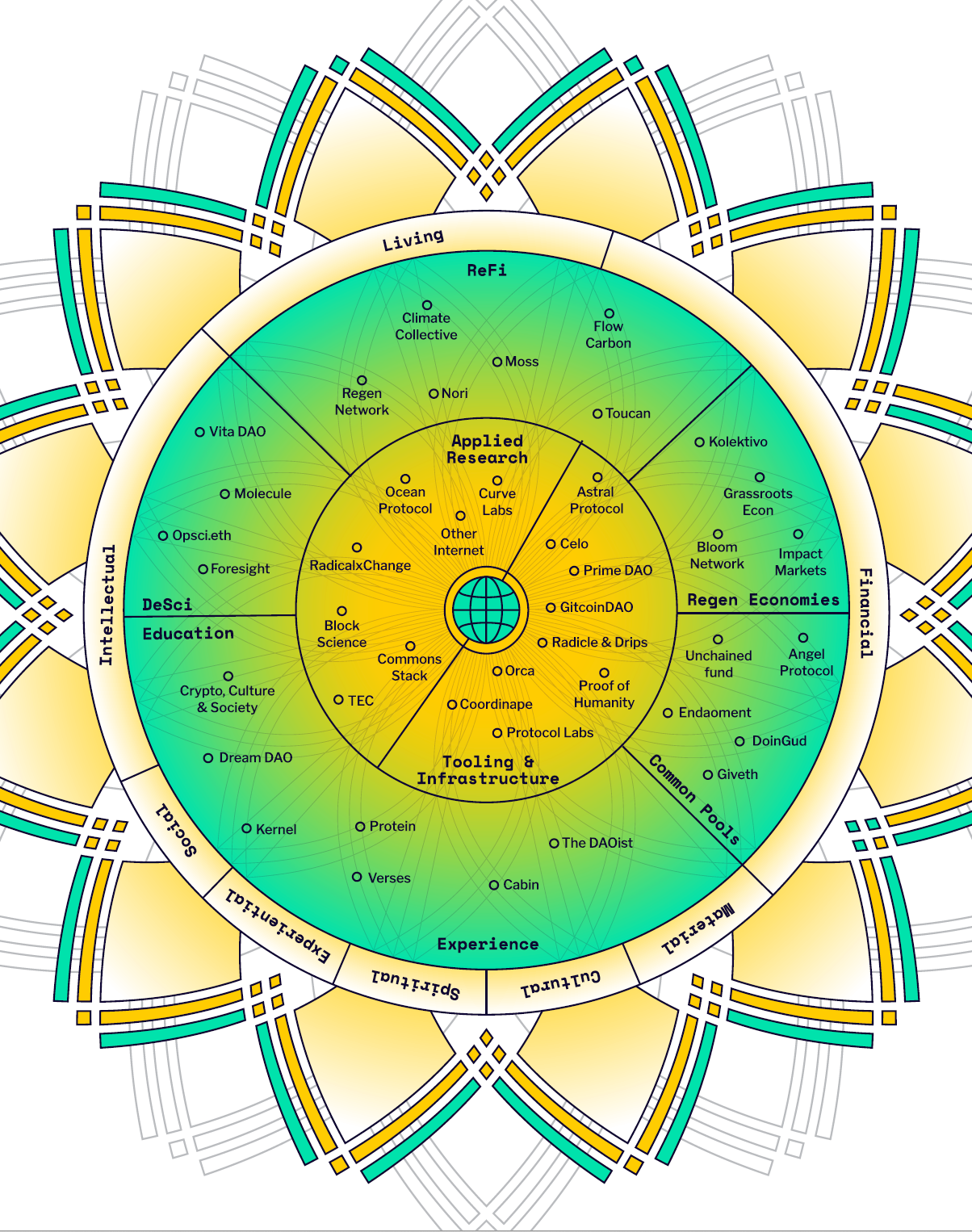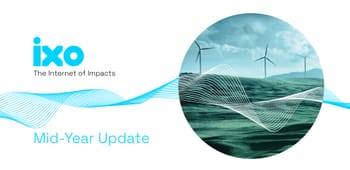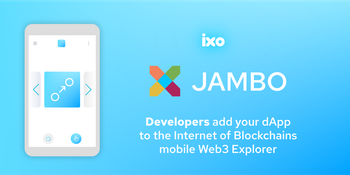Patterns for scaling human and capital coordination
Before we dive into the current state of ImpactDAOs, we’ll take a slight deviation to bigger-picture concepts that we will ground on the practical application of a growing ImpactDAO ecosystem.
Web3 has the potential to scale our internal and collective ability for human and capital coordination. We can now redefine incentives towards actions that regenerate ourselves and the earth. But are we tapping into this full potential?
We see web3 as a tool within a broader shift in consciousness, away from lack, sacrifice and control into an abundant, free and positive-sum future. How do we leave the old ways behind to create new value systems?
Throwing more money and technology into broken systems will likely create no change unless we coordinate these networks to redefine how we operate as humans. We have long been pushing money into the system, and it seems like the only thing growing is the amount of capital we need to solve these same problems. Money magnifies.
How do we make sure we use our energy and time to implement solutions that truly drive change? How do we move beyond solving the most obvious symptoms and start tackling the underlying factors that create those symptoms in the first place?
We can engineer better carbon removal methods, but we will endlessly continue to sequester carbon from the atmosphere unless we redesign our extractive monetary system fuelling pollution. How do we re-organise the economy to better align with the natural world?
Nature can regenerate itself. It has done so for years. Yet, we have pulled society so far away from the balance that we might need to intervene. We should fix urgent problems while building the base infrastructure for new thriving systems that render the old obsolete. Once we fix current issues, energy can naturally transition to create value in regenerative systems.
We move to an ecosystem awareness of all the moving factors across a system to identify patterns, connect seemingly unrelated dots and tackle the highest leverage point we can shift–which act just like acupuncture points–creating rippling effects on the entire system.
Although boundaries allow us to study and understand the dynamics of interconnected systems, boundaries are, in reality, blurred. Everything is interconnected. For example, our gut health affects our metabolic health, cognitive ability, and chronic disease prevalence. The microbiome diversity of the soil in which its grown directly impacts our gut. Economic incentives enable or prevent farmers from implementing regenerative agriculture, which increases the CO2 in the soil and hence the microbiome diversity and our health.
Regeneration includes redefining what we value and how we share that value. It calls for regenerating our internal selves, our experience with others and our meaning of wealth to one where we focus our energy on that which will improve the world.
This shift in approaches emphasizes collaboration and open sharing approaches, learnings and insights others can leverage. We also move away from saving or helping. There is no hierarchy; everybody should be at the table to discuss as equal parties to design our futures. By providing everyone with the tools, we can decentralize the innovation process for each network to innovate, leveraging their specific expertise to change their circumstance— it’s not one person’s role or responsibility to do it.
We take a step back to breathe. What are the tensions in the system, and how do we remove them? With curiosity, we analyze our perception of value and perception of impact. We have an active role in designing, architecting, experimenting, and stewarding collective pieces of a powerful but intentional engine for change. ImpactDAOs are at the core of that change, leveraging web3 to create that regenerative society we seek, securing web3 as what enabled us to create a better future.
The current state of ImpactDAOs might not entirely reflect the vision we shared above, but we hope to help catalyze the energy and action that can take us there (or to a better future than what we were able to paint). Although ImpactDAOs are still nascent and with a lot more room to explore, this book is a snapshot of the current state of ImpactDAOs, showcasing how organisations are using web3 for good now. Hopefully, this acts as a Schelling point to rally the community to explore further how crypto can regenerate the world and put it into action. We would be very excited to capture more stories of how web3 has positively changed real lives in future book iterations.
Characteristics of the ImpactDAO ecosystem:
- Symbiotic— naturally interoperable. Because each effort unlocks greater value for other nodes in the network, we can modularly stack ImpactDAOs for talent, energy, and resources can fluidly move to where it is most needed.
- Composable—anyone can leverage and build on designed web3 primitives and implement them in their stack for a continuously evolving set of tools and strategies.
- Collaborative—we can align incentives for a multiplayer game. It is no longer about the winning strategy but rather the health of the whole ecosystem, building our collective intelligence and capacity to do good.
- Transparent—although still nascent, we can leverage the on-chain, immutable records for accurate impact measurements to continue funding what works and leave behind what does not.
Featured ImpactDAOs
We chose to feature ImpactDAOs to objectively verify they have achieved a provable method to achieve tangible positive externalities. Criteria:
- Individual output: ImpactDAOs with a demonstrated sustainable long-term strategy to achieve positive outcomes on their primary impact area would have otherwise not been possible without a novel use of web3.
- Positive externalities: These ImpactDAOs act as building blocks to enable other impactDAOs to leverage or build on top to achieve a greater impact. Eg. PoH Sybil-proof list of humans, other ImpactDAOs useful governance, proof of identity, etc.
- Leverage point: Intervening at a critical place within the system that have a ripple effect, and not merely redistributing donations or giving away free meals, their approach redesign core mechanisms of society causing problems in the first place.
We bring back the concept of a symbiotic, composable and collaborative ImpactDAOs stack and apply it to the featured DAOs. Hypothetically, we can sketch a simplified framework for local, sovereign micro-economies with a plurality of ways to transact money. We can weave regeneration into our economic system through these, one where the ecology grows while the economy grows.
[For context, before this, I explain each featured DAO in detail]
ImpactDAO stack example
First, the community comes together and decides on the values, goals and actions they will coordinate, prioritize and fund.
Celo’s blockchain can serve as a layer for all members to transact value between each other through the Valora App, using their phone numbers as identification. Through the Valora App, communities can transact value within the community containing value flow, and local groups can transact regardless of the broader economic climate.
With Proof of Humanity, all members have access to UBI to power access for all basic needs. Now, each person starts contributing expertise to areas that the community collectively identified as important for the given season.
Let’s zoom in into agriculture or tending to nature, forests. We can use Regen Network’s research on what are the best methods to regenerate particular living species or work alongside them to explore and develop a new methodology. The methodologies include how to assert monetary value to particular ecological transformations to generate credits. Through Regen’s registry, individuals can sell ecological or carbon credits to companies or individuals looking to balance a negative externality by financing positive externality work.

How do we verify that a positive ecological transformation happened?
Astral Protocol working on Geospatial referencing data analysis connected to on-the-ground sensors, can trigger a rewarding behaviour on smart contracts once the positive transformation happens. Spatial data could also allow the community to proactively respond to environmental hazards if an adverse change in the landscape is perceived.
We again come back to PoH to verify that the person who worked on the soil is the same who uploads the data and receives the rewards of such positive change.
Currently, the demand and value of credits are low, but using Toucan’s bridge to transfer credits from off-chain to on-chain increases liquidity, fractionalization, and access, thereby increasing the demand and value of restoring the environment. Hence, the more valuable the credits, the more profitable it becomes for communities to care for forests rather than extract resources. Therefore, economic growth drives ecological health.
What about other experiences, skillsets and needs such as health and education?
We can apply Quadratic Funding or Quadratic Voting as explored by Gitcoin for the community to signal which projects are most valuable to funnel resources to. PoH appears again, verifying that each human represents one vote in governance decisions. Another possibility is to bootstrap specific projects with Augmented Bonding Curves as designed by The Commons Stack, where the community can invest funds into projects they care about. These will be locked up in the curve until it goes live, and their value continues to go up as it provides more value for the community. The curve’s parameters ensure that a portion of the funds continue to be distributed to the common pool to sustain the public good even if people exit the curve. All of these tools can be built through Radicle’s open-source software stack. With Radicle Drips, beneficiaries of public goods, those who enjoy someone’s music or meditation can direct Drips to support the continuous value given. The receiving individual or organization can further split these drips to others who made that work possible, creating an overflowing of value.
Yet, this is just one snapshot within a single hypothetical community. A community can be formed through geographical location-based spatial proximity. But it could also represent a social network that exists distributed globally but with shared ideas and values. As we build the new operating system to coordinate globally, we take other aspects of life into account. Although a limited perspective by two people, these are some concepts we find very interesting to see unfold:
- Drips — a continuous flow of value distribution instead of locking it up. Anyone can support causes they care about, and those who receive can further redistribute to those who enabled them to create such value. Without intermediaries, we can collectively fund action and work we value.
- Pods —self-governed and emergent pods that enhance agency and execution power of working groups, increasing efficiency, growth and flexibility. Pods unlock cross-DAO collaboration as these can bud, merge and split with cross-DAO members, increasing collaboration. Orca does not bring prescriptive methods on how organizations should structure their DAOs but rather dynamic and composable structures each DAO can play with.
- UBI — Proof of Humanity, Worldcoin, Impact Markets, and others explore how everyone can cover their basic needs and can focus on giving the rest of their time to meaningful things.
- Natural Capital Assets— the ability to back currencies with nature to tie regeneration with economic development is quite exciting. Celo’s vision to fund 40% of its currency tokenizing nature-based projects or Astral’s ability to trigger the smart contract with positive ecological transformation.
- Recognition of value — systems like Coordinape allow us to recognize and distribute immeasurable value collectively, transparently, and more accurately. At a human layer, we can bring our whole selves to our communities and humanize the otherwise top-down experience of sharing, giving and receiving. The tech layer enables full transparency, fairness and distributed decision making.
- DAO collaborations— concepts like token swaps to share a stake in each other’s growth, funding a shared product or research that will unlock value to multiple DAOs or participating in Meta-governance to decide on positive-sum approaches are key components of a synergistic ecosystem.





